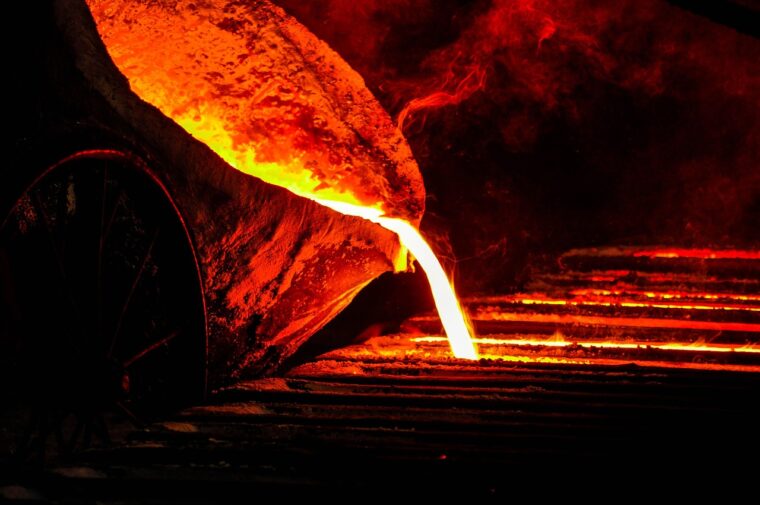
The U.S. Department of Energy has awarded $136 million to multiple projects intended to advance technology that will at reduce energy demand while improving industrial productivity.
Projects will focus on industries that produce chemicals and fuels, iron and steel, cement and concrete, forest and paper products, glass and food and beverages. These industries account for over 75% of the U.S. industrial energy demand, employ roughly 13 million Americans, and contribute roughly $27 trillion to U.S. gross domestic product.
RELATED: DOE allocates $70.8 million for manufacturing improvements focused on vehicles, batteries
“These industrial subsectors are economic engines for our nation, producing critical consumer products and inputs used to make many other manufactured goods,” said Jeff Marootian, principal deputy assistant secretary for DOE’s Office of Energy Efficiency and Renewable Energy. “By focusing on novel technologies and process optimization within these key subsectors, selected projects can bolster competitiveness and create a positive ripple effect for supply chains across our nation’s economy.”
The projects fall into six categories.
Chemicals and fuels
$5 million for Nitricity, Inc. to demonstrate a large-scale plasma-based process to convert air, water, and renewable electricity into a nitrate-based fertilizer in Fremont, California. The process could reduce carbon emissions by displacing the need for ammonia in nitrate-based fertilizer production.
$3 million for Project Evolution in New Haven, Connecticut to optimize and scale up a recycling process to convert textile waste into high quality by-products. The process could reduce carbon emissions by up to 70%.
$2.1 million for Washington University in St. Louis, Missouri and private sector partner BASF to work to convert to convert biogas, or other waste gases comprised of CO2 and methane, to dimethyl ether (DME) using a two-step process. DME is an important intermediate chemical and a potential alternative fuel that often relies on petroleum-based feedstocks and process heat. The process could reduce energy consumption while increasing reaction performance and catalysts lifetime with potential to enable carbon negative DME production.
Iron and steel
$3 million to Lunar Resources, which is partnering with Texas A&M University and others to develop technology to produce and refine iron ore with zero emissions. Innovative iron production technology would be used to overcome anode degradation challenges associated with molten oxide electrolysis (MOE), a new, breakthrough process for commercial production of iron ore. The technology could decrease the reliance on a nascent MOE anode supply chain reduce operational energy usage, electrify primary iron production and decrease emissions.
$1 million to Pacific Northwest National Laboratory to develop an electrochemical process route to produce metallic, low-emission iron from red mud, a waste product that is otherwise costly to dispose. Red mud contains significant levels of iron oxide as a by-product of alumina production. The recovery of iron from red mud has proven challenging through conventional approaches, often leading to a need to stockpile the material.
Decarbonizing food and beverage products
$1 million for Oak Ridge National Laboratory to develop and demonstrate a hybrid electric-fuel infrared emitting thermal technology specifically designed for commercial kitchens. The proposed research plan would deliver modulated thermal energy for different thermal intensities and temperature ranges with the ability to turn down, making it a versatile building block for various cooking equipment pieces, including vat fryers, biscuit ovens and clam shell grills.
$1 million to the University of Tennessee to identify preferred bio resources for plant-based food packaging.
Building and infrastructure
$2.8 million for Oak Ridge National Laboratory in Oak Ridge, Tennessee to develop optimized limestone/activated clay/calcium sulfate (LACCS) blends to be supplied directly to concrete producers. The improved fillers could present a viable, short-term solution to reduce the carbon intensity of concrete production.
$2 million for the Missouri University of Science and Technology to lead a project to expand the database of alternative cement fillers to enhance an AI platform for rapid accurate performance prediction, and optimization of blends with large volume of substitutions (60-80%). The project could potentially reduce carbon emissions by up to 70%.
Decarbonizing Forest Products
$3 million for North Carolina State University and Research Triangle Institute International to optimize the recycling process for old, corrugated containers (OCC) while producing biogas. Advantages of using the proposed anaerobic digestion (AD) pulping technology include reduced feedstock preprocessing, lower energy demand for fiber recovery and biogas production to offset natural gas consumption for drying.
$2.1 million for the University of Maine and partner WestRock to achieve up to 85% decarbonization of kraft pulp mills by replacing the existing chemical recovery process, including the recovery boiler, with one driven by renewable electricity. The process would enable the conversion of existing mills to use renewable solar or electrical heating.
Industrial Pre-FEED Studies
$1.3 million to the University of Minnesota Duluth and its partners to examine the construction of a hydrogen-based direct reduced iron (DRI) plant. The test facility will use hydrogen instead of coal or natural gas, with onsite integration of hydrogen generation by electrolysis, renewable electricity generation, and storage for hydrogen and energy. If successful, it would provide a low-carbon, secure domestic supply of iron for the U.S. steel industry.
$1.2 million for OCOChem in Richland, Washington to lead a study to identify a more environmentally and economically sustainable solution to industrial decarbonization in the US for small and mid-size CO2 industrial emission sources. The study’s objective is to make the high carbon capture and re-use costs more affordable by integrating on-site industrial carbon capture with on-site carbon conversion to make value-added formic acid. It includes designing a CO2 capture system for post-combustion flue gas of an existing co-located potato processing facility via hollow fiber membranes and designing the CO2 conversion system using a novel electrolysis process.
Image by Erdenebayar Bayansan from Pixabay
The post DOE invests $136 million to reduce industrial energy demand appeared first on Government Market News.
